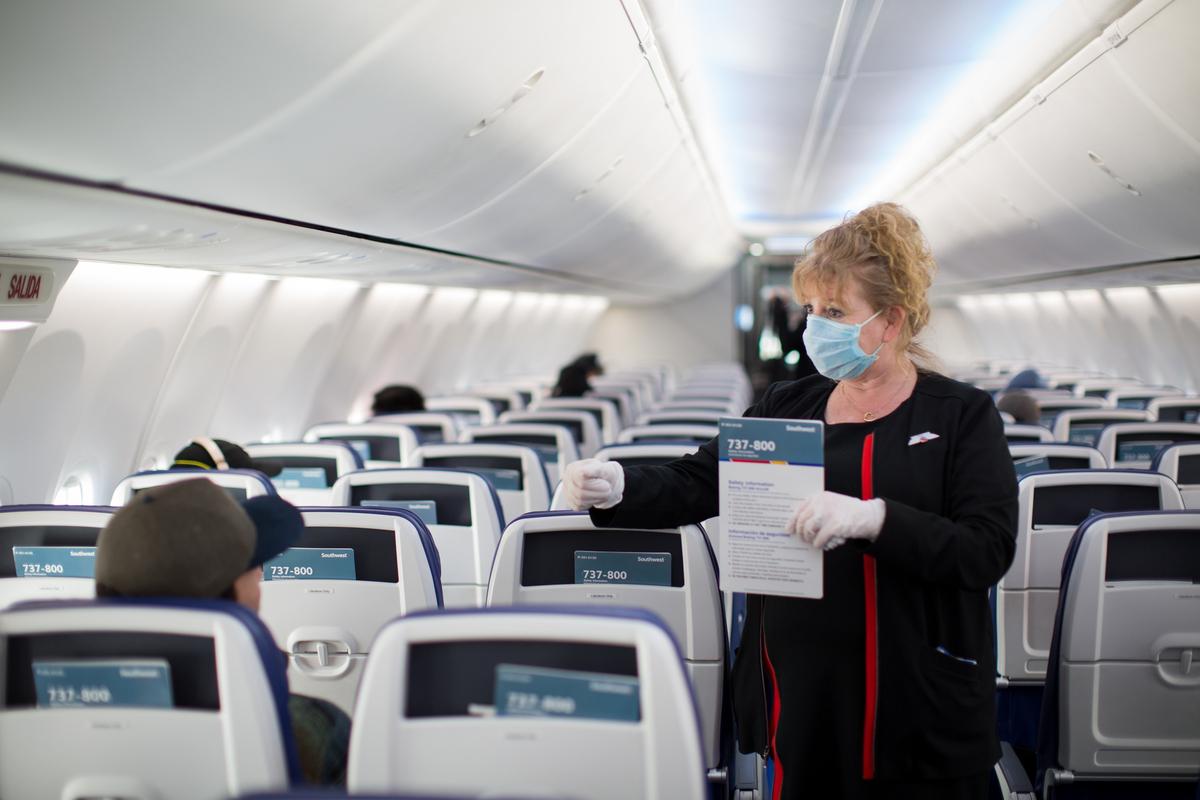
Southwest Airlines will refrain from laying off workers or cutting pay rates and benefits through year end, despite persistently weak customer demand caused by the COVID-19 pandemic.
“Up front, I want you all to know we will not furlough or lay off any Southwest employees on Oct. 1, unlike our major competitors,” Southwest president and CEO Gary Kelly told staff in a July 24 memo.
Dallas-based Southwest has never implemented mass layoffs in its 49-year history. Kelly said he couldn’t promise layoffs won’t happen in 2021 but said they would only ever come as a last resort.
“I can’t guarantee it will never happen, especially during these dark pandemic times,” Kelly said. “I can promise you it will be the last thing we do to keep Southwest financially healthy and viable.”
Nearly 17,000 of Southwest’s 61,000 total pre-pandemic employees have applied for voluntary separation or extended time-off programs, in a bid to mitigate the need for payroll reductions once CARES Act job protections expire Oct.1. Of those 17,000 workers, 4,400 will permanently depart the company, while 12,500 have agreed to either short-term or extended temporary leaves of absence.
Southwest’s decision to avoid downsizing stands in sharp contrast to American Airlines and United Airlines, which have warned a combined 61,000 frontline employees of potential involuntary furloughs come October. Delta Air Lines has yet to initiate an action on the scale of either American or United but has warned it expects to be overstaffed by 2,300 pilots in the 2020 fourth quarter (Q4).
Kelly attributed Southwest’s ability to forego headcount reductions to its relatively strong balance sheet position and financial performance during the pandemic. With $14 billion in liquidity, the company has enough cash to survive two months at current demand levels, and its $11 billion debt load is just a fraction of the burden at its main competitors. Southwest is currently burning through $20 million per day, compared to $25-30 million among the big network airlines.
“Our standing within the airline industry is tops. No one can top our financial position,” Kelly said.
Echoing recent remarks from United CEO Scott Kirby, Kelly said he agrees demand will not recover to “normal” levels until a COVID-19 vaccine is widely available, which he said likely will not happen until mid-2021 at the earliest. “That all suggests we’re living with depressed air travel for another year,” Kelly said.
With minimal exposure to international travel, Southwest operated the largest overall schedule of any major U.S. airline this summer, with capacity reaching 75% of 2019 levels during the highwater mark in July. In recent weeks, however, the company has seen deteriorating forward bookings, leading management to slash Q4 schedules by 25% from previously planned levels.
“Hopefully traffic demand will recover and match that capacity; remember it’s currently running down 70%,” Kelly said. “We need to double traffic from here to break even, and close to triple to be profitable.”





